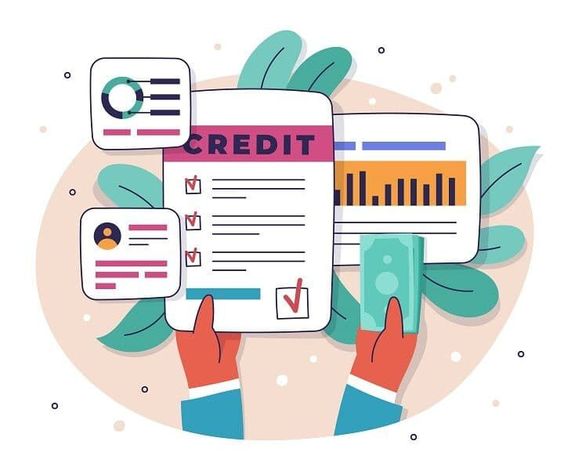
How to Get a Loan with Bad Credit
Securing a loan with bad credit can be challenging, but it’s not impossible. There are various strategies and types of loans available that cater to individuals with less-than-perfect credit scores. Understanding your options and taking steps to improve your financial standing can increase your chances of approval. Here’s a comprehensive guide on how to get a loan with bad credit.
Understanding Bad Credit
Credit scores range from 300 to 850, with scores below 580 generally considered poor. Bad credit can result from late payments, high credit utilization, bankruptcy, or other financial missteps. Lenders view individuals with bad credit as higher risk, which can make it more difficult to obtain a loan and can result in higher interest rates and less favorable terms.
Steps to Get a Loan with Bad Credit
1. Check Your Credit Report
Start by obtaining a copy of your credit report from the three major credit bureaus: Equifax, Experian, and TransUnion. Review your report for any errors or inaccuracies that could be dragging down your score. Dispute any errors you find to potentially improve your credit score.
2. Know Your Credit Score
Understanding your credit score will help you determine which loans you may qualify for and what interest rates to expect. Knowing your score can also help you avoid applying for loans that have a high likelihood of rejection.
3. Consider Different Types of Loans
There are several loan options available for individuals with bad credit:
- Personal Loans: Some lenders specialize in personal loans for people with bad credit. These loans can be used for various purposes, including debt consolidation, medical expenses, or emergency costs.
- Secured Loans: Secured loans require collateral, such as a car, savings account, or other valuable assets. Because the lender has security, these loans can be easier to obtain and may come with lower interest rates.
- Payday Loans: These are short-term loans with high interest rates and fees. They are generally considered a last resort due to their cost and potential for creating a cycle of debt.
- Credit Union Loans: Credit unions often have more flexible lending criteria and may offer personal loans to members with bad credit.
- Home Equity Loans: If you own a home, you may be able to borrow against your equity. These loans typically have lower interest rates, but your home is at risk if you default.
4. Prequalify with Multiple Lenders
Prequalification allows you to see potential loan offers without a hard inquiry on your credit report. Compare offers from multiple lenders to find the best interest rates and terms. Look for lenders that specialize in bad credit loans or have more lenient lending criteria.
5. Improve Your Debt-to-Income Ratio
Lenders consider your debt-to-income (DTI) ratio when evaluating loan applications. Lowering your DTI can improve your chances of approval. Pay down existing debts, increase your income, or do both to improve your ratio.
6. Provide Documentation and Explain Your Situation
Be prepared to provide detailed documentation, including proof of income, employment history, and any explanations for past credit issues. Some lenders may be willing to overlook bad credit if you can demonstrate that your financial situation has improved or that you had extenuating circumstances.
7. Consider a Co-Signer
A co-signer with good credit can improve your chances of loan approval and help you secure better terms. The co-signer agrees to repay the loan if you default, reducing the lender’s risk. Ensure that your co-signer understands the responsibility and is willing to help.
8. Be Prepared for Higher Interest Rates
Loans for individuals with bad credit typically come with higher interest rates. Understand that you may pay more in interest over the life of the loan. Focus on making timely payments to improve your credit score and potentially refinance to a lower rate in the future.
9. Avoid Predatory Lenders
Be cautious of lenders that prey on individuals with bad credit. Predatory lenders often offer loans with extremely high interest rates, hidden fees, and unfavorable terms. Research lenders thoroughly and read reviews to ensure they are reputable.
Improving Your Credit Score
While securing a loan with bad credit is possible, it’s also essential to work on improving your credit score for better financial opportunities in the future. Here are some tips:
- Pay Bills on Time: Your payment history is the most significant factor in your credit score. Make all payments on time, including loans, credit cards, and utilities.
- Reduce Credit Card Balances: Aim to keep your credit utilization ratio below 30%. Paying down high balances can quickly improve your score.
- Avoid New Credit Applications: Each new credit application results in a hard inquiry on your credit report, which can lower your score. Apply for new credit sparingly.
- Build a Positive Credit History: Use credit responsibly and maintain a mix of credit types, such as installment loans and revolving credit.
- Monitor Your Credit Report: Regularly check your credit report for errors and stay informed about your credit status.
Conclusion
Getting a loan with bad credit requires understanding your options, preparing thoroughly, and being willing to accept higher costs and less favorable terms. By checking your credit report, exploring various loan types, improving your financial situation, and working to improve your credit score, you can increase your chances of securing a loan and achieving better financial health in the long run. Remember to borrow responsibly and focus on building a positive credit history for future financial opportunities.